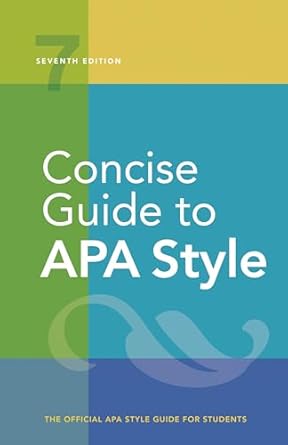[toc]
effective tables figures a guide for academic writing
Concise Guide to APA Style: 7th Edition (OFFICIAL)
Page 156 Review
Understanding Effective Use of Tables and Figures in Academic Writing
In academic papers, tables and figures are essential tools for summarizing information and presenting data analysis results.
However, their use should be purposeful and not merely decorative.
As the text emphasizes, “Although tables and figures attract attention, they should not be used for mere decoration in an academic paper.
Instead, every table and figure should serve a purpose.” This highlights the importance of strategic inclusion.
Purpose-Driven Design
The design and preparation of tables and figures should always begin with a clear understanding of their purpose.
The excerpt states, “When preparing a table or figure, first determine the purpose of the display; then, select a format that supports that purpose…” This underlines the need to choose the appropriate format to effectively communicate the intended message.
For instance, “if the purpose is to illustrate a theoretical model, a chart is most likely the best option.” Alternatively, when presenting group scores, a table allows for precise value representation, while a figure emphasizes similarities or differences between groups.
The text points out that “a table would allow readers to see each group’s exact scores, whereas a figure would emphasize similarities or differences between groups.”
Reader-Centric Approach
Designing tables and figures with the reader in mind is crucial for effective communication.
Clarity and visual appeal should be prioritized.
The text advises, “Communicate findings clearly while also creating attractive visual displays.”
Consistency between the text and visual elements is also essential. “Changes in text often demand changes in tables and figures, and a mismatch between data discussed in the text and data presented in tables and figures may result in a lower grade for student assignments if the error is not corrected before submission.” This emphasizes the need for careful review and alignment.
Key Principles for Design
Several key principles can guide the design of effective tables and figures:
- Labeling: “Label all columns in tables.” and “Label all elements in figure images (e.g., label the axes of a graph).” Proper labeling is fundamental for clarity.
- Proximity: “Place items that are to be compared next to each other.” This facilitates easy comparison and understanding.
- Font and Readability: “In figure images, use sans serif fonts that are large enough to be read without magnification.” This ensures accessibility and readability.
- Self-Sufficiency: “Design the table or figure so it can be understood on its own (meaning readers do not have to refer to the text to understand it).” Tables and figures should be comprehensible without constant reference to the main text.
- Abbreviations: “Define abbreviations used in the table or figure even if they are also defined in the text…” Consistent definition enhances understanding.
- Avoid Decoration: “Avoid decorative flourishes, which are distracting and can interfere with readers’ comprehension; instead, ensure that every element supports the goal of effective communication.” Focus should be on clarity and purpose, not unnecessary embellishments.
Conclusion
In conclusion, the effective use of tables and figures in academic writing requires careful consideration of purpose, reader perspective, and design principles.
By following these guidelines, writers can enhance the clarity and impact of their work. “When possible, use a standard, or canonical, form for a table or figure…” adhering to established formats can also improve comprehension and credibility.
Buy full ebook for only $18: https://www.lulu.com/shop/american-psychological-association/concise-guide-to-apa-style-7th-edition-official/ebook/product-rmzpq54.html?page=1&pageSize=4

